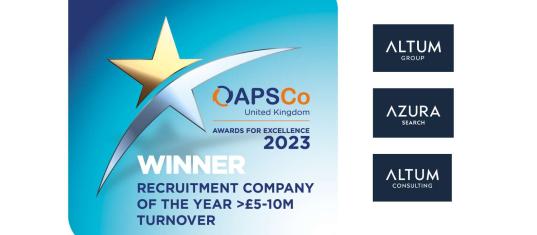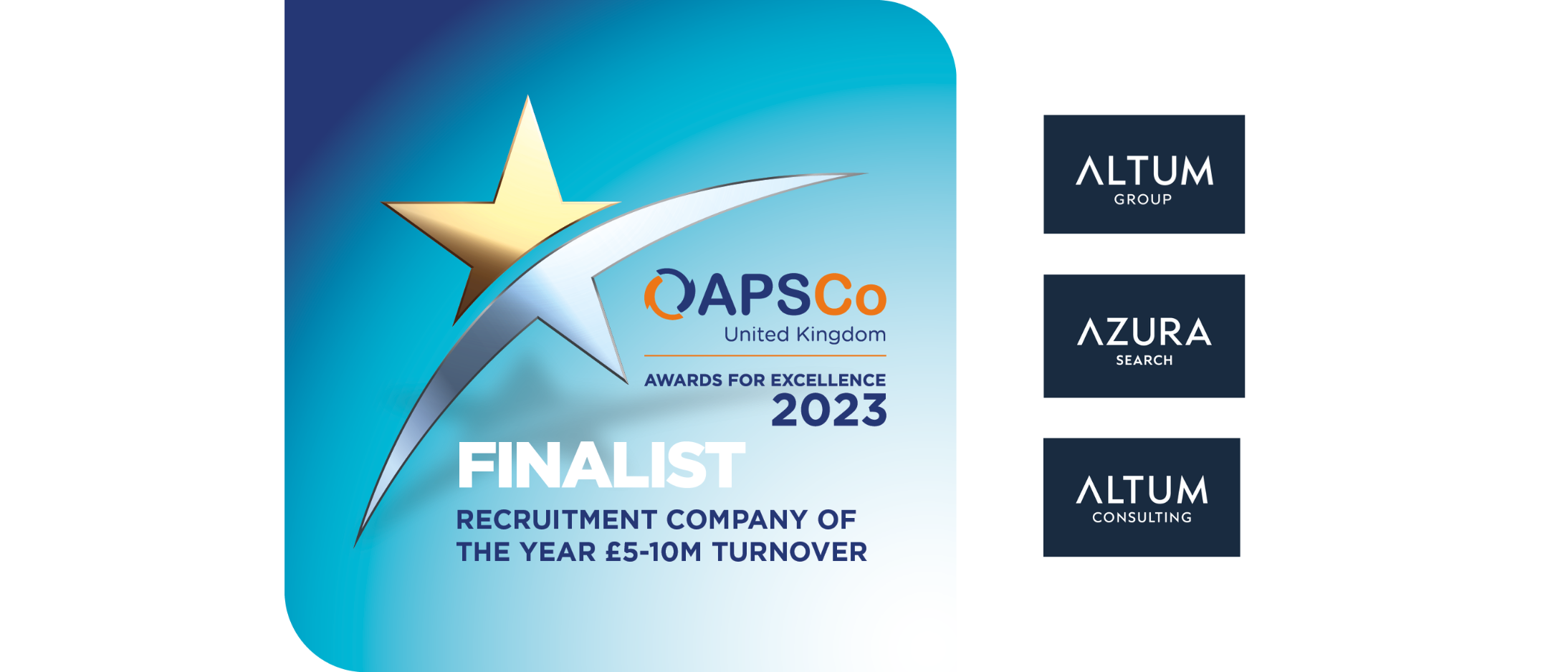Diverging CEO Pay: Are UK and US Models Still Fit for Purpose?
Why Global Competitiveness, Culture, and Governance Shape Executive Rewards
The job of a CEO has evolved dramatically in recent years. Today’s leaders are navigating technological disruption, environmental, social, and governance (ESG) pressures, geopolitical shocks, and shifting stakeholder expectations, all while driving performance and retaining and attracting talent. Despite facing similar challenges, executive pay structures in the US and UK have not evolved in the same way.
For this article, we spoke with executives and board members across listed UK and US companies to understand the forces shaping current pay practices and boardroom dynamics. Their insights inform the themes and tensions explored throughout.
The gap is clear: in large publicly listed companies, US CEOs earn about 2.5 times more than UK CEOs - roughly $16 million versus $6.5 million on average. Research from Schroders suggests the disparity is even wider across the broader market, UK-based CEOs earning just one-fifth of what their US counterparts made during the 2021–2023 period.
Why is the US Outpacing the UK?
The structure of executive pay in the US is fundamentally different. While base salaries are similar, in the US, they typically make up just 10 to 15 percent of the total package. The rest comes from short-term bonuses and long-term incentive plans, many of which include time-based vesting rather than strict performance conditions. This results in a higher “at-risk” component and significantly more upside. It also demonstrates closer alignment with shareholder returns, particularly in high-growth or high-volatility industries.
While US packages remain larger, tolerance for weak links between reward and results is beginning to fade. Private equity has become a major driver of executive pay inflation. With equity-heavy packages and carried interest structures, PE-backed firms offer far greater upside, forcing listed companies to rethink how they attract and retain C-suite talent. Some public companies are already borrowing from the PE playbook, adopting more equity-heavy frameworks.
CEO tenures are diminishing, with a significant portion now serving under five years. That raises questions about how much of the long-term incentives actually vest, and whether this trend may gradually reduce the US–UK pay gap.
Is the UK Catching Up?
To some extent, yes. In 2024–2025, FTSE 100 executive pay grew faster than in the S&P 500. Several developments have contributed:
- The scrapping of the EU bonus cap gave UK firms more flexibility to reward executives through variable pay.
- Shareholder approvals for pay increases, such as those at London Stock Exchange Group and Smith & Nephew, paved the way for others to follow.
- FTSE firms cited the need to stay competitive with global markets, particularly when seeking cross-border talent.
There is also growing interest in hybrid pay models in the UK, combining performance shares with restricted stock or time-based awards.
Despite signs of convergence, the underlying realities remain distinct. Several structural and cultural forces continue to shape the divergence between UK and US executive pay models.
“International mobility peaks between the late 20s and 40s, especially in fields like technology, finance, and consulting.”
Limited Mobility at the Top
Despite the growing gap in executive pay, cross-border movement, particularly between the UK and US, remains relatively rare at the senior level.
While 43 percent of executives globally say they are open to relocating abroad, in reality, most moves occur earlier in a career, when professionals are more mobile and less rooted. A 2025 IIC Partners report shows that international mobility peaks between the late 20s and early 40s, especially in sectors such as technology, finance, and consulting. Later in life, family, property, and established networks often make relocation harder, even when the financial upside is clear. Corporate careers follow similar patterns. Those who gain global exposure early are more likely to remain internationally mobile over time.
Executive search norms reinforce these trends. International candidates are rarely promoted for top roles, and most CEO appointments on both sides of the Atlantic remain locally sourced.
Proxy Influence and Boardroom Constraints
In the UK, proxy advisers and shareholder votes exert significant influence over executive pay decisions. For example, when London Stock Exchange Group proposed raising its CEO’s pay from £5.1 million to £7.8 million, proxy adviser ISS recommended shareholders to reject the proposal due to concerns over the LTIP design deviating from “typical UK market practice”, even as the company cited global benchmarks in its justification.
We spoke with several FTSE Remuneration Committee Chairs who described frustration at inconsistent standards: “Proxy advisors in particular have significant impact on the decision-making process. It is highly frustrating that the same proxy advisors might approve a policy in the US and reject a similar policy in the UK. It is not a principled approach, they tailor their advice to the local market.”
Others raised concerns about the broader impact on competitiveness: “Capital flows across borders, people flow across borders. But proxy firms do not.” Legally enforceable shareholder votes, combined with the UK Corporate Governance Code, give investors significantly more upfront power, often leaving little room for course correction.
“In the US, it is asking for forgiveness. In the UK, it is asking for permission.”
In contrast, “say on pay” votes in the US are advisory. This gives boards more discretion to explain and justify pay decisions after they are made, a flexibility that many UK boards lack. As one board member who has sat on both UK and US board told us: “In the US, it is asking for forgiveness. In the UK, it is asking for permission. UK boards are forced to go to shareholders in advance, which gives investors the ability to stop the board from acting. That makes it much harder to design the best possible package for the business.”
However, this dynamic may be shifting. The SEC has recently raised concerns about the influence of proxy advisers like ISS and Glass Lewis. As reported by the Financial Times, US policymakers are examining whether their recommendations promote uniform voting at the expense of nuance and context. If reforms go ahead, US boards may gain even greater latitude in designing pay frameworks.
Meanwhile, UK Remuneration Committees operate in a different climate. Many rely on the same consultants, benchmarking groups, and template structures. As one board member put it: “Remuneration advisors are consulted widely, and the result is an over-reliance on the same advice around risk. This leads to a broadly vanilla pay structure across the FTSE, and where companies want to try something different, they are automatically outliers.” In a system where deviation invites scrutiny, standardisation becomes the safer route. As a board member noted: “Anything below 80% shareholder approval needs to be explained. That drives a very low risk appetite due to personal and business reputational risk, which perpetuates further self-constraint.”
Culture and Governance: A Deeper Divide
This is not merely a regulatory gap; it reflects a deep cultural divide. Across the Atlantic, success is celebrated and often rewarded handsomely. In the UK, by contrast, high pay can trigger social condemnation, known in governance literature as an ‘outrage constraint’ that shapes boardroom behaviour and limits compensation escalation. The UK’s ‘outrage constraint’, a mix of social, reputational, and political pressure, can help to keep board decisions in check. Social researchers have warned that importing US-style pay could worsen inequality and undermine workforce morale. The governance frameworks reflect these cultural differences. In the US, boards act first and defend later. In the UK, they must seek permission in advance. While this creates predictability, it often reduces agility.
In that sense, reputational risk – for both companies and individual Remuneration Committee Chairs – looms large in the UK. Headlines about executive pay are a regular feature of the news cycle, and many boards curb proposals early to avoid media fallout, even when commercially justified. As a result, we have seen a marked decline over the last decade in candidates willing to undertake the Remuneration Committee Chair role on UK-listed boards.
Not only is there significant personal risk, but the time commitment associated with these roles has increased substantially, given the need for extensive shareholder and proxy consultation. Coupled with that, the average FTSE 350 Remuneration Committee Chair gets a fee circa 10 percent lower than their Audit Committee counterpart. For many candidates, “it is simply not worth it.”
“Across the Atlantic, success is celebrated, often rewarded handsomely. In the UK, by contrast, high pay can trigger social condemnation”
Performance Metrics: ESG and Beyond
Boards on both sides of the Atlantic are refining how they define and reward success. Financial performance remains central, but non-financial metrics, especially ESG factors, are increasingly embedded into many packages. The UK leads in this space. Over half of FTSE 100 companies now include ESG metrics in their pay structures. But the metrics are not always effective. As one board member told us: “The vast majority of shareholders do not comment on ESG metrics. When they do, it is irritation that ESG targets pay out better than financial ones. Target setting is just not as robust.”
Another added: “Proxies want targets that are easy to measure, which means you end up basing the KPIs on a very small part of the ESG agenda. Scope 3 targets, which represent 90%+ of some companies’ environmental impact, do not make it into the compensation plan because they are too hard to measure. So, the ESG metrics that are included do not mean much and are easy to achieve.”
This mismatch risks diluting the strategic value of ESG-linked pay. Nonetheless, non-financial KPIs can play a role in moderating volatility. As one executive pointed out: “Non-financial KPIs can be a tool to spread risk. If financial targets are unlikely to be met [due to economic or political volatility, for example], at least there is still an opportunity for executives who have worked hard to earn some of their bonus.”
In the US, ESG-linked pay is more polarised and increasingly under political pressure. With recent regulatory and political shifts, some US companies are starting to remove ESG conditions from performance scorecards altogether.
In the UK, particularly where companies have US investors, boards have moderated the language they use in their reporting. “Our commitment to ESG, and particularly DEI, has not changed. However, we have altered the way we talk about it in our reporting.”
What Are the Consequences?
The disparity in pay models has real implications. International companies with US operations are more likely to re-list in the US, where access to capital, regulatory flexibility, and executive pay structures are more favourable. In some firms, North American divisional CEOs earn more than the international group CEOs to whom they report, despite having a narrower strategic scope. This creates a structural imbalance and contributes to the risk of talent drain. However, many of these group CEOs are willing to accept this dynamic as it is “the cost of doing business in the US.”
One FTSE Remuneration Committee Chair described how they were aiming to use the US-UK market dynamics to effect change in UK pay. They have rallied their US investors to lobby proxy advisors on their behalf, in the hope that more generous pay policies will be approved in the future.
Private equity has become a major force. One board member noted: “PE and other forces are driving these compensations up. We have lost executives to PE where they can make far more than in public companies. PE firms are smart, they know that if you pay good people well, you get fantastic results.” The US compensation structure reflects this logic. “The US approach is to share the wealth and pay for performance,” said one board member. “Base salaries are lower, shareholder return is much higher, and small performance differences can drive enormous shareholder value. That is what the packages reflect.”
While some rising talent is relocating to the US to pursue greater upside, others are bypassing public markets entirely. Organisations in the technology and private capital sectors offer more tailored and less constrained reward models, often without the limitations of listed companies.
What Comes Next?
The CEO pay gap between the US and UK is narrowing slightly, but the deeper cultural and structural differences remain intact. Governance codes, shareholder expectations, and public sentiment all continue to shape UK pay in ways the US model does not contend with. Private equity is redrawing the benchmark, offering greater upside and closer alignment. Executive mobility remains heavily dependent on early-career international exposure, not just financial incentive.
One area that deserves more focus is non-executive director pay. In the US, NEDs frequently earn two to three times more than their UK counterparts, despite having less clearly defined responsibilities. It is another angle of the global competitiveness debate - and one we will shortly explore in greater detail.
About Azura
Azura is a boutique firm specialising in executive and non-executive search, interim management, leadership and board-level advisory. With offices in London, Amsterdam, and New York, Azura offers unparalleled access to diverse and international talent pools and has delivered placements across more than 30 countries. Driven by a relationship-led, consultative approach, Azura combines data-informed insight with a deep commitment to diversity and inclusion to identify leaders that are not only a strong professional fit, but are also aligned with clients’ long-term values and vision.
Authors
Karen Fox is a Partner at Azura and leads the Board Practice, focusing on Chair and Non-Executive Director appointments.
Sian Penwarden is a Partner at Azura, specialising in executive hiring for global brands of listed organisations and private equity across North America & Canada.
Lieke Bos is a Consultant at Azura. She leads Azura’s board and leadership advisory services and delivers both executive and non-executive searches.












